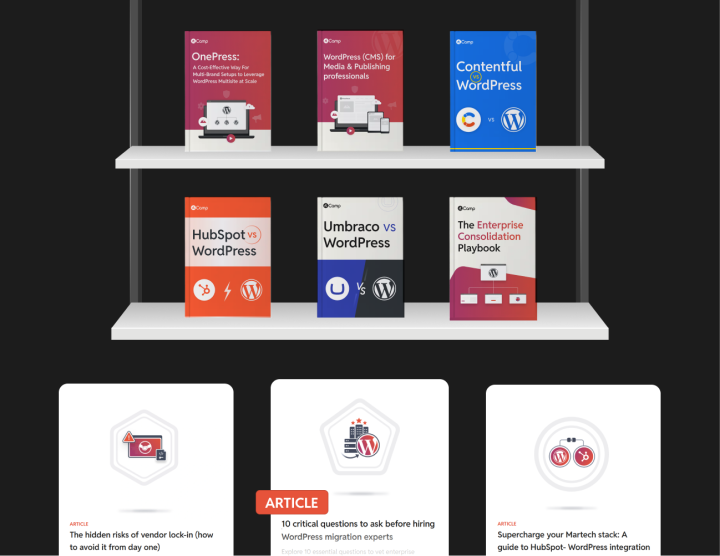Sanity CMS vs WordPress: Content management interfaces
When managing content daily, the platform’s interface is what teams interact with the most. Sanity and WordPress offer two different approaches: Sanity Studio focuses on customization for businesses with specific workflows, while WordPress Dashboard provides a simpler, user-friendly interface for quick content creation and management. But which one is better for your needs?
Let’s look at both to see how they compare.
Sanity Studio
Sanity Studio is the backbone of Sanity headless CMS, providing an open-source tool for managing content. It’s customizable, meaning businesses can design the interface and workflows that suit their exact needs. For example, an online store can create custom sections for managing products, promotions, and inventory, while a media company can design editorial tools for publishing.

Content management
Sanity Studio allows teams to add custom fields, design workflows, and even modify the interface itself. This makes it ideal for businesses with unique requirements, such as e-commerce stores or content-heavy websites.
Hosting
You can self-host Sanity Studio on platforms like Netlify or Vercel, or opt for Sanity’s managed hosting. While self-hosting gives control, it requires regular maintenance. Managed hosting, though simpler, adds recurring costs.
Integration with frontends
The Studio works well with modern frameworks like Next.js, ensuring smooth content delivery across platforms like websites, apps, or even IoT devices.
While Sanity Studio is great for customization, it’s designed with developers in mind. Non-technical users may struggle to even setup or make updates. Frequent updates or schema changes can require technical support, which could slow down businesses that need to move quickly.
WordPress dashboard management
The WordPress Dashboard is the heart of WordPress CMS, offering an easy-to-use interface that caters to beginners and experts alike. It’s designed to be intuitive, so anyone can manage content without needing coding skills.

Quick and easy setup
WordPress’ Dashboard is ready to use right after installation. You can manage posts, pages, menus, and media files from a central hub, making it ideal for non-technical teams.
Visual customization
Tools like Elementor and the Gutenberg Block Editor make designing visually stunning pages in WordPress a breeze. These tools use a drag-and-drop interface, allowing users to create professional layouts without needing any coding skills. Whether you want to add an image gallery, a call-to-action section, or even a full landing page, it’s as simple as selecting a block and placing it where you want.
A significant advantage of WordPress is that Gutenberg is built into the core platform, meaning you don’t need to install any additional software to start building. This ensures every WordPress site, no matter how basic, comes with a powerful page editor right out of the box.
For businesses, this built-in capability reduces reliance on external tools, lowers costs, and provides immediate access to intuitive design features. Whether you’re running a blog, an e-commerce store, or a corporate site, Gutenberg simplifies content creation while maintaining a polished, professional look.
Hosting flexibility
Unlike Sanity’s managed hosting, WordPress can run on any hosting provider, from budget-friendly shared plans to enterprise-grade solutions like WordPress VIP and Pagely.
Plugins for automation
WordPress makes updates and maintenance easy with its plugin ecosystem. For instance, tools like Jetpack or UpdraftPlus help with automated backups and updates.WordPress’ Dashboard ensures businesses can manage their content and website without relying heavily on developers. A small e-commerce store can use plugins like WooCommerce to manage inventory, process payments, and update products all through the Dashboard.







